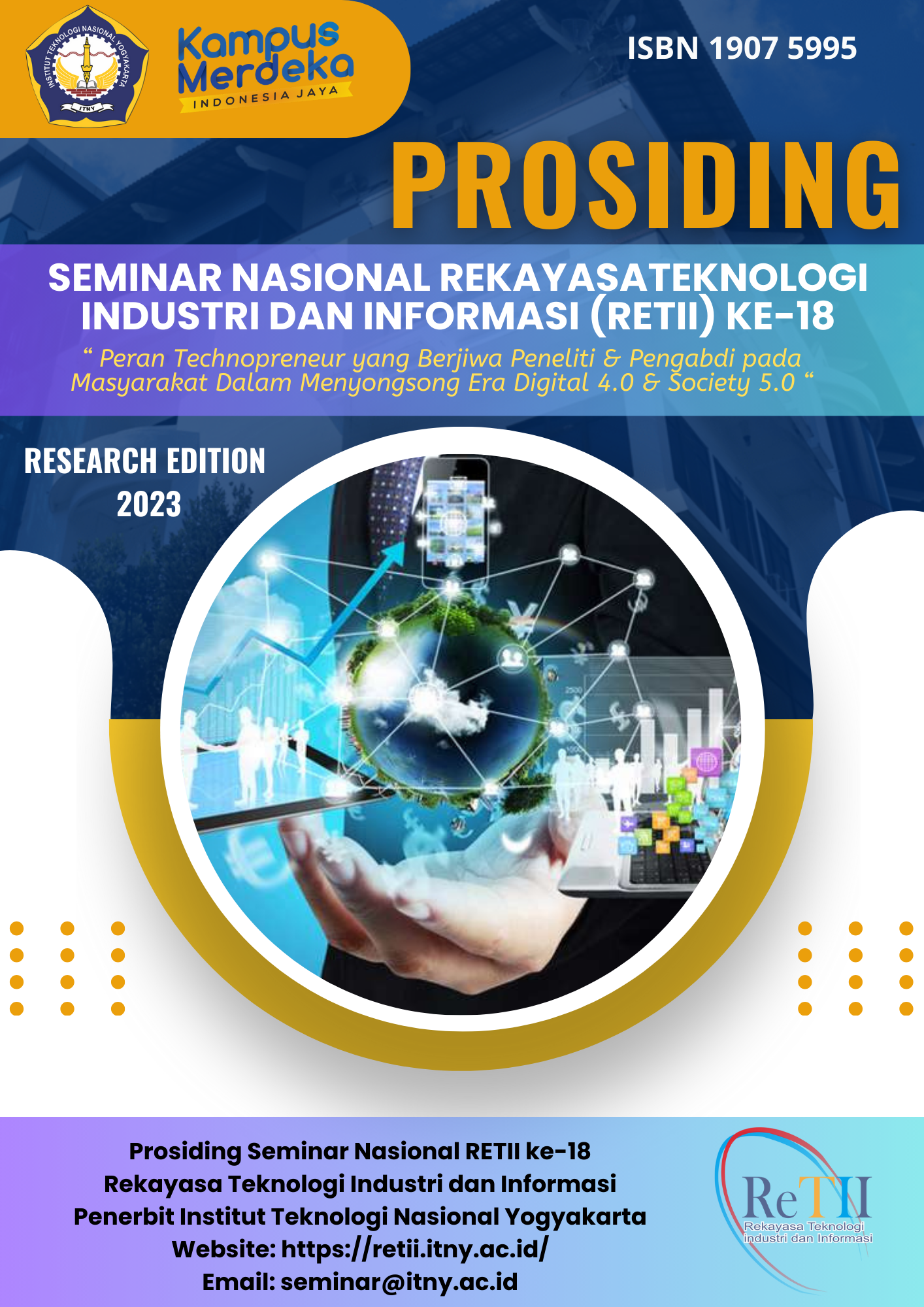Perubahan Iklim Formasi Sentolo pada Kala Miosen Awal - Pliosen di Jalur Kali Serang, Nanggulan, Kulon Progo
Keywords:
Foraminifera, Ancient Climate, Sentolo FormationAbstract
The research area is included in the Physiography of the Kulon Progo Mountains to the south, in Kali Serang, Kec. Nanggulan, Kulon Progo Regency, Special Region of Yogyakarta. This study aims to determine the pattern of ancient climate change in the middle Sentolo formation, which is used to correlate the ancient climate in the upper Sentolo formation to previous researchers. The results of the field data obtained at the study site were two facies, packstone and grainstone, which are included in the bioclastic limestone unit with a thickness of 30m. Identifying microfossils with samples (top, middle, bottom) obtained several species of benthonic foraminifera fossils totaling 89 and 79 planktonic foraminifera. The results of calculating the relative ages of the Sentolo formation in this study ranged from N13-N14 (middle Miocene). Based on the calculation of the p/b ratio for determining the depositional environment is in the middle neritik - outer neritik. In calculating the percentage of fossils that characterize warm temperatures (Globigerinoides spp., Orbuliniforms, Globorotalia menardi, Globorotalia praemenadri, Globigerina venezuelana, Globoquadrina dehiscens, Globoquadrina praedehiscens, Globigerinella obesa, Globorotalia siakensis) and cold (Catapsydrax, globigerina woodi, Globorotalia scitula, Globigerrina sp p.s., Globorotaloides). Entering the outer neritic depositional environment, the climate gradually cools down, marked by an increasing number of fossils characteristic of cold temperatures. Determination of changes in ancient climate patterns at the research blood location using an analysis of the abundance of planktonic foraminifera that characterizes warm and cold temperatures in the study area has one pattern of temperature change, namely the cooling phase. The cooling phase begins at N13 - N14, and the temperature gets colder with deeper ocean depths occurring in the study area in the middle-outer neritic depositional environment.
Keyword : Foraminifera, Ancient Climate, Sentolo Formation
References
[2] Harjanto, A. (2011). Vulkanostratigrafi di Daerah Kulon Progo dan Sekitarnya, Daerah IstimewaYogyakarta. Jurnal Ilmiah Magister Teknik Geologi, 4(8).
[3] Rahardjo, W. S. (1977). Peta Geologi Lembar Yogyakarta skala 1 : 100.000. Direktorat Geologi, Bandung.
[4] Novita, D., Wirawan, D.R., Rijani, S., dan Hermawan, U., 2022. Pola Perubahan Iklimpurba pada Umur Pliosen dengan Proksi Foraminifera: Studi Kasus Formasi Sentolo, Yogyakarta. Pusat Survei Geologi, Jalan Diponegoro No. 57,Bandung, Jawa Barat Universitas Gadjah Mada, Jalan Grafika No 2, D.I.Yogyakarta.
[5] Pringgoprawiro, H. (1968). On the Age of Sentolo Formation Based on Planktonik. Dept. of Geology, ITB, Bandung.
[6] Grimsdale, T.F and van Morkhoven, F.P.C.M., 1955. The Ratio Between Pelagic and Benthonic Foraminifera as a Means of Estimating Depth of Deposition of Sedimentari Rocks. Proceedings of the 4th World Petroleoum Congress (Rome). 473-491.
[7] Bicchi, E., Ferrero, E., and Gonera, M., 2003. Paleoclimatic Interpretation Based on Middle Miocene Planktonic Foraminifera: the Silesia Basin (Paratethys) and Monferrato (Tethys) Record. Paleogeography, Paleoclomatologu, Paleoecology, 196(3-4): 265-303.
[8] Dunham, R.J., 1962. Classification of carbonate rocks according to depositional texture. In: W.E. Ham (Ed), Classification of carbonate rocks. Am. Assoc. Petrol. Geol. Mem. 1: 108-121.
[9] Grabau, A. W. (1904). On the Classification of Sedimentary Rocks.
[10] Blow W.H., 1969, Late Middle Eocene to Recent planktonic foraminifera biostratigraphy. Int. Conf. Plank. Microfossil 1st,1967, Geneve, vol. 1, p. 199-422.
[11] Tipsword, H. L., Setzer, F. M., & Smith Jr, F. L. (1966). Interpretation of depositional environment in Gulf Coast petroleum exploration from paleoecology and related stratigraphy.
[12] Dumitru-Grivei, M., Ion, V., Birjega, R., Moldovan, A., Craciun, F., Cernea, M., Galassi, C., & Dinescu, M. (2019). Multiferroic (Nd,Fe)-doped PbTiO 3 thin films obtained by pulsed laser deposition. Applied Physics A: Materials Science and Processing, 125(2), 0. https://doi.org/10.1007/s00339-019-2403-5
[13] Barianto, D. H., Kuncoro, P., & Watanabe, K. (2010). The use of foraminifera fossils for reconstructing the Yogyakarta graben, Yogyakarta, Indonesia. Journal of South East Asian Applied Geology, 2(2), 138-143.
Downloads
Published
How to Cite
Issue
Section
License
Prosiding ini memberikan akses terbuka langsung ke isinya dengan prinsip bahwa membuat penelitian tersedia secara gratis untuk publik mendukung pertukaran pengetahuan global yang lebih besar.
Semua artikel yang diterbitkan Open Access akan segera dan secara permanen gratis untuk dibaca dan diunduh semua orang.


